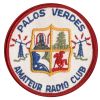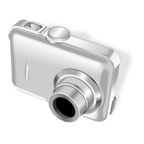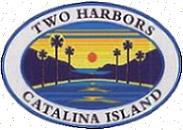Islands On The Air DXpedition
Santa Catalina Island NA-066
February 22-26, 2012
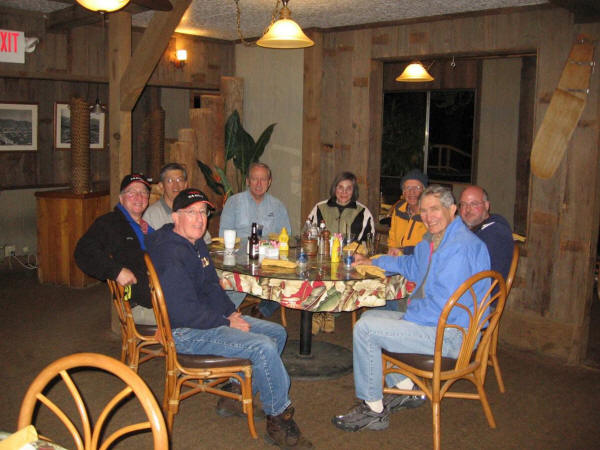
Jeff Wolf K6JW, Clay Davis AB9A, Dan Yang K6DPY,
Ray Day N6HE, Diana Feinberg AI6DF, Bill Leighton KG6WVF,
Joe Pace NZ6L,
Bob Closson W6HIP
By Clay Davis, AB9A
PVARC Vice President
Feb 22nd, for the second time, I left the mainland on a trek with a
group of intrepid PVARC DXers to the island paradise of IOTA NA-066,
to activate “K6PV/6”.
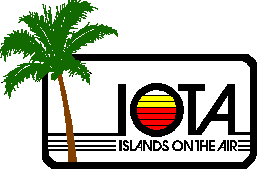
So, what is this IOTA NA-066? IOTA stands for the Radio Society of
Great Britain’s “Islands On The Air” program. And, NA-066 is the
South Channel Islands - San Clemente, San Nicolas, Santa Barbara and
Santa Catalina. We were headed for Santa Catalina Island. IOTA has
organized the ocean islands of the world into about 1200 groups. The
goal of the DX “island chaser” is to make contact with at least one
island in each group. Just as there are awards for WAS, WAZ and
DXCC, there are also certificates and awards available to the DX
“island chaser”. For a detailed explanation and history of IOTA,
check out the web site:
http://www.rsgbiota.org .
Here is the official notice of our activation:
Activation of Santa Catalina (NA-066):
From: 23-Feb-2012 02:00
Until: 26-Feb-2012 16:00
Callsign: K6PV/6
Operators: N6HE, K6JW, NZ6L, AB9A, AI6DF, KG6WVF,
K6DPY, W6HIP
QSL Information: QSL direct to QRZ.COM address for
K6PV.
Comments: We'll be active on 20M SSB mostly, with
some on 10/15/40M SSB. We\'ll be in the NAQP RTTY and CQWW160 SSB
events. Will be 160-80-40-20-17-15-10M capable on SSB, CW, RTTY, and
maybe PSK31.
Email lasnakeboy@gmail.com
for skeds. Spot us, please! Thanks, Ray N6HE.
Website:
http://www.palosverdes.com/pvarc/
Submitted by: N6HE on 02 Feb 2012.
If you doubt just how intrepid this group is, check out the email
address (lasnakeboy) in the activation notice. Enough said?
The hard core DXers in the group called this a mini-DXpedition. But,
in reality it had all the trappings of the real thing. The only
difference being we traveled 22 miles instead of half way around the
world. There were months of planning by our fearless leader Ray Day,
N6HE, with major help from K6JW and NZ6L. They skillfully organized
the logistics of radios, antennas, coax, masts, antenna analyzer,
adapters, cables, computers, logging programs, hardware, spare
parts, radio rooms, cabins for the team, food, cooking and eating
utensils and more. We took somewhere between 800 and 1000 lbs. of
equipment and supplies with us. And, we used all of it, sometimes
for purposes other than it was intended (more on that later).
People waiting to board the Catalina Express were puzzled, staring
at this group of hams with various combinations of club jackets,
Yaesu ball caps, and HT radios, standing around military camo
equipment bags, Pelican boxes, ice chests and piles of luggage. And,
as if that wasn’t conspicuous enough, they segregated us and our
gear to the opposite side of the gate. I think they didn’t want to
frighten the regular passengers. Somehow, deep down inside, the day
you received your first call sign, you knew you were different.
Right?
The boat ride over was occupied with many strategy discussions about
our next move. How are we going to get all this gear up the hill
(that’s right - up the hill!) and set up to make our first contact
(Kilo Six Papa Victor, Portable 6, IOTA NA-066, calling CQ and
listening)?
After we arrived at Two Harbors, schlepped the gear up the hill and
started unpacking, I remembered why I signed up for the second trip.
I did it because the first trip was such a fun, intense, and
rewarding hands-on learning experience, for a ham new to the world
of HF DX. It’s one thing to pick up an HT and hit the push-to-talk
button or walk into an HF shack and sit down and operate. It’s quite
another to walk up to a pile of antennas, masts, coax, guy rope,
radios, power supplies and hardware and hear the words (paraphrased)
“There’s three operating stations with 6 antennas covering 70 cm to
160 meters in this pile. Lets make it happen”.
That may all sound daunting. But, I quickly discovered that I was
standing in the middle of a group of engineers and operators that
could be considered the equivalent of the Cal Tech of ham radio. If
it can be done with ham radio, one or all of them have been there,
done that and got the t-shirt to prove it.
And so the process started and I learned that everything in the
field is fluid. Nothing is absolute. Every step is a new problem to
be solved and a learning opportunity. There were strategy
discussions on where to put up the beam antennas, what are we going
to use to attach the masts to the eaves, where are the guy points
going to attach. Who is going to go over to the tennis courts and
put up the fiberglass poles (tie wrap to the fence) to hang the
80/40 meter dipoles? Did you put a clip on the Hex Beam mast to hang
the 40 meter dipole? Is the 160 meter dipole going to terminate on
the school swing set this year or on the volleyball pole? We need to
put some clip leads on the 40 meter dipole to tune it! Can we get a
ladder from the camp manager? One by one the problems were solved,
some in very creative ways you couldn’t have predicted (NZ6L putting
a wrench with a line attached over the tri-band beam mast, with a 20
foot section of fiberglass antenna mast, while standing on the
kitchen roof). Each radio starts to come to life and we are on the
air.
I pick up the mic and say “Kilo Six Papa Victor, portable 6, NA-066,
Santa Catalina Island, calling CQ and listening”. Then, all of a
sudden it happens. THE PILE UP!!! For a ham new to HF, this is the
Ah-Ha moment. I’ve hit the mother lode. The times I’ve have listened
to dozens of operators trying to get through to a sought after DX
station (that’s me) and wondered what it was like to be on the other
end. Well, this is it. I start to feel like I’m air traffic control
(pun intended). I have more stations than I can count calling all at
once. My adrenaline starts pumping. But I have an ace in the hole. I
have a cool, calm Elmer (K6JW) sitting next to me (remember the been
there done that?) patiently guiding me through the process of how to
handle the contacts, pick out the calls, segue smoothly from one
contact to another and ready to pull me back from the brink of the
momentary sensory overload I’m invariably going to go through. After
half an hour of operating at this level of intensity, my mouth is
dry and I need a break. I pass the mic to the next operator, step
outside and say to myself, “WOW”. Then it hit me. I’m hooked on HF.
So, I return back to the mainland and start shopping for an HF
radio, confident that I know how to set up a station, erect and tune
an antenna and handle a QSO. I’ve done it three times in one week.
No sweat!
If you have a license and haven’t tried HF, think of the Catalina
trip as HF University. You may have no experience going in. But,
you’ll be an HF operator when you come home. Or, come to Field Day
in June and give it a try. If you do, I’ll bet that you too will be
at HRO checking out the HF transceivers.
At the March 21st club meeting, Ray Day, N6HE, our truly intrepid
leader, will be giving a full program on the Catalina IOTA
DXpedition. I hope you’ll come and share in the fun. 73,
Clay, AB9A.
(Reprinted from the March 2012 QRO.)
 View
PVARC 2012 IOTA Videos (uploaded to YouTube)
View
PVARC 2012 IOTA Videos (uploaded to YouTube)
 View PVARC Presentation by Ray Day
(6MB PDF without videos)
View PVARC Presentation by Ray Day
(6MB PDF without videos)
Pictures
and Videos by:
Dan Yang K6DPY, Ray Day N6HE, Diana Feinberg AI6DF,
Joe Pace NZ6L, Bob Closson W6HIP
Our sincerest thanks to the staff of Two Harbors Guest Services for all the hospitality extended to us during our event.
